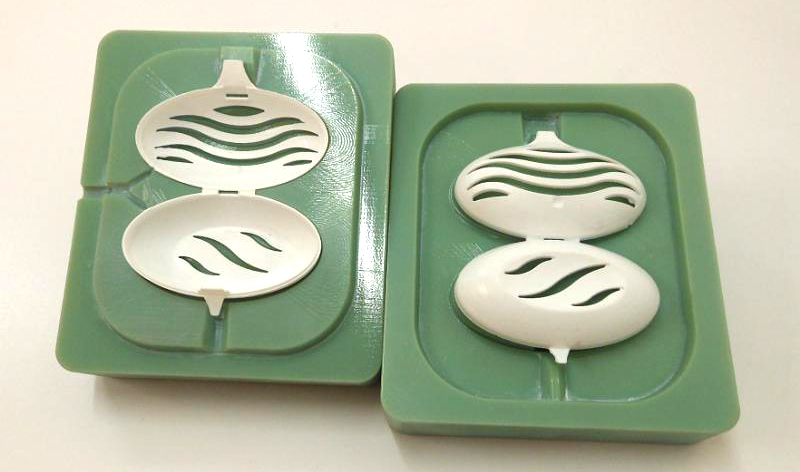Last year, I met with Stratasys European Territory Manager Davide Ferrulli at the MCSPE industrial manufacturing fair in Parma, Italy. Along with the Objet 500 Connex3 being shown in Europe for the first time, one of most important aspects that Ferrulli pointed out at the show was the possibility to 3D print injection molds for prototyping products in their final materials. Now Unilever, one of the biggest consumer product companies in the world, has just demonstrated the reasoning behind such a process, announcing that injection molds made with Stratasys’ PolyJet technology have help the company cut lead times for prototype parts by as much as 40%.
Since introducing Stratasys’ PolyJet-based Objet500 Connex multi-material 3D production system into their workflow, Unilever’s Italian division has been using it for producing the injection molding tools for its household care and laundry goods division. These are molds 3D printed in Digital ABS, a material renowned for its high temperature resistance and toughness, which enables it to be used for molding small series of up to 50 products from the end-use material. The prototypes range from bottle caps and closures to toilet rim blocks.
“Using Stratasys 3D printing technology, we can design and print a variety of injection molds for different parts that can undergo functional and consumer testing, all on the same day,” explains Stefano Cademartiri, R&D, CAD and Prototyping Specialist at Unilever. “Before, we would have to wait several weeks to receive prototype parts using our traditional tooling process; not only would this lengthen lead times, it would also increase costs if iterations were required. With 3D printing, we’re now able to apply design iterations to the mold within a matter of hours, enabling us to produce prototype parts in final materials such as polypropylene, 40% faster than before.”
PolyJet is not the only Stratasys technology being implemented at Unilever. The company, which also owns brands such as Surf, Comfort, Hellmanns and Domestos, also produces thermoforming mold prototypes on its Fortus 360mc 3D Production System, using ABS-M30 production-grade plastic. This professional FDM system is used to fabricate realistic molds with flexible strength that can also endure functional testing, crucial in developing the final thermoforming mold.
“Having previously outsourced our thermoforming requirements, we found that we were accumulating significant labor costs and having to contend with lengthy lead times,” adds Cademartiri. “However, since 3D printing these parts ourselves, we’ve reduced lead times in the conceptual phase by approximately 35%. The technology has enhanced our overall manufacturing process, allowing us to evaluate our designs quickly and eliminate those that are not suitable, before committing significant investment towards mass production.”
While we often overlook it in favor of direct prototyping and direct manufacturing applications, one of the biggest trends in industrial 3D printing is still the use of additive manufacturing to produce tools that can improve and speed up traditional manufacturing processes. As Wohlers Associates reports, even in the best case scenario that 3D printing grows to 2% of the global manufacturing industry by 2030, the remaining 98% will continue to be made by traditional methods.
Nadav Sella, Senior Manager Manufacturing Tools, explained that Stratasys seeks to cater to these industrial requirements as well, adding that “with the development of some of our recent, more durable materials, our customers can now enjoy flexibility in their choice of methods to create their manufacturing tools and test designs in their final production materials, before investing in costly metal tools.” In the end the consumers will still benefit by getting better products faster, while the company and even the environment will benefit from the less energy and material consumption required for making their prototypes.




